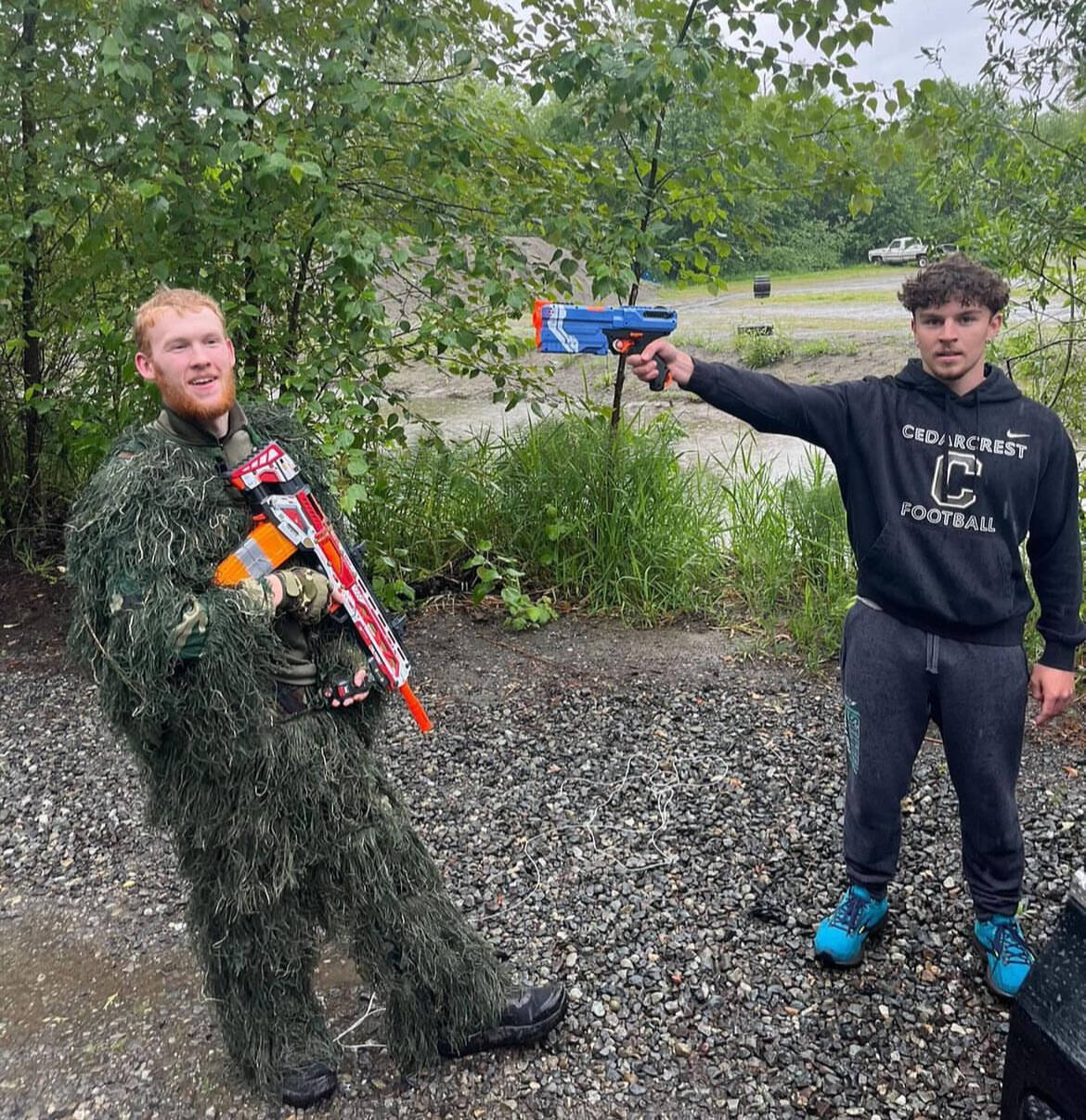By Benjamin Floyd, For the Valley Record
Stalking, hostage-taking, and assassination — for our high school seniors, there is no finer way to connect with their classmates as the end of high school creeps closer, and the future beyond the classroom becomes more real.
Emerging in the early 2010s, the game “Senior Assassin” has become a tradition for seniors across the country. As both Cedarcrest and Mount Si high schools cap off the academic year, here’s a reflection upon the place this game has within the Snoqualmie Valley.
How to play
At its core, Senior Assassin is an elimination game managed and played by students outside of school. Interested seniors must pay a small sum into a prize pool to be eligible to play. More often than not, students choose a partner-in-crime.
Next, the coordinators of the game, historically younger students, privately assign the teams their unique target — everyone is hunting, and everyone is hunted. Teams are given a finite amount of time (usually a week) to “assassinate” their target with Nerf guns, complying with rules defining the legality of an elimination. School property is off limits, as are places of work and prayer.
When the round ends, those who have hit their marks receive new targets with the unsuccessful fading from memory. Round by round, the circle gets smaller and the participants more lethal. Winners walk away with hundreds of dollars and the ultimate glory of being remembered forever. For the game played by Cedarcrest High School students these past few weeks, Ramon Arguelles and Kavin Sundar walked away with $400 to share, with second-place Lauryn Anderson and Annabelle Walker collecting $200 between them.
The respective games are directed and archived on social media. The Instagram account “@chs.senior.ass.24” has been passed down for several years, serving as a highlight reel of previous games at Cedarcrest. See their account for the 10-page document of rules for a more comprehensive understanding.
How to win
From a sociological perspective, the game demands the absolute most of the students’ ability to manipulate their long-standing social relations to get a leg up in the game. It might be the rare instance in high school where being well-known is a major setback — if anyone from your school has ever been to your house, be aware that your hunters have found your address and have already cased it for weaknesses. Like hardened detectives, seniors scrape the school and internet for rumors hoping to discover that bit of information that gives them the edge. Bribery is preferred over blackmailing.
And after a long day of sleuthing between classes, seniors transform into clandestine assassins with a single goal in mind. Paying off the parents of targets to wake their student up with a Nerf bullet is not unheard of. Participants must check front yard trees, garbage bins, rafters, and car trunks for their hunters — most “killings” come from stowaways.
Other important methods rely on mobility, or the lack thereof; blocking a target’s car in their driveway just 10 minutes before their work shift is a sure way to bring them to the negotiation table. At Cedarcrest this year, Lauryn and Annabelle only agreed to appear for the final shootout if $200 of the total $600 prize was given to the second-place team — a fine lesson in economics.
Personally, my genius came from feigning a fit of frustration over an alleged dead car battery in the middle of a road in order to lure my target — and childhood friend — out of his car with jumper cables in hand. We have since reconciled.
In the community
Cedarcrest juniors and most recent game coordinators Kaylee Scott and Grant Stumbles were at the heart of this year’s game. They offered their reflections upon the tradition:
“It was fun. I got yelled at a lot, but it shows the passion of these kids for the game and sport they love. I’m looking forward to doing it next year… there is just something about it,” Grant said.
“It’s just like a really cool, fun way for our community to get together and for our seniors to get together… it has been really fun to be able to be in charge of something that’s so big and important to the whole school,” Kaylee said.
Beyond those who participate and those who wait for their turn, support for the game has been more moderate. For parents, the game is a major disruption to family life; for police chiefs, a sustained disruption to public order. In a nation where a leading cause of death for children has consistently been gun violence, it quickly becomes apparent as to where this game fits into wider discourse. The Uvalde shooting of 2022 occurred in the middle of that year’s game at Cedarcrest, a deep jolt to those shooting foam bullets. That year’s joint winner, Natalie McCabe, donated her winnings to the Uvalde victim relief fund.
While it is marked for its disruption and intersection with gun violence, this game offers seniors an opportunity to unite behind a shared commitment to friendship — after stalking someone for days, you get to know them. It finds students from opposite ends of the social landscape becoming steadfast friends in the final weeks of their high school experience. Most importantly, this game itches the youthful need for a self-constructed form of fun, something uniquely different than hours spent searching for fun in the structured confines of a video game, or the fun squeezed from the institution of sport.
And with a national decrease in access to public and free “third spaces,” self-made and self-maintained fun becomes all that more important. Senior Assassin is the students’ attempt to take responsibility for their own fun, wherever and whenever they can, using a concept of their American childhood as familiar as yellow school buses and packed lunches — guns and shooting.


